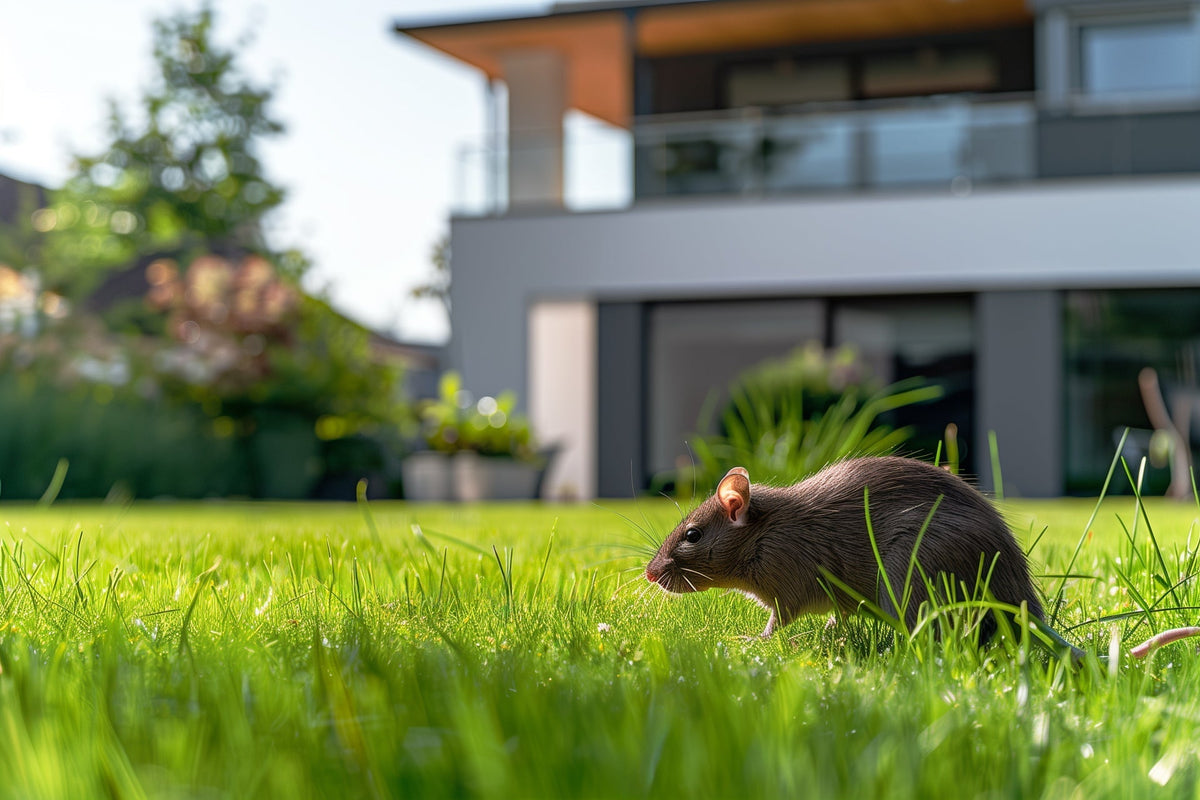
Rats in the Garden – Here's What You Should Do!
|
|
Time to read 6 min
|
|
Time to read 6 min
Rats in the garden are a common problem that poses significant challenges for many homeowners. These rodents are not only annoying, but can also cause significant damage and transmit various diseases.
Rat infestation can quickly spiral out of control, especially if no effective measures are taken. Rats look for food, water and shelter and find ideal conditions in gardens to reproduce. They gnaw on plants, leave traces of food and rat droppings and can even endanger the safety of buildings through their activities.
In this article, you will learn how to recognize a rat infestation, which measures are suitable for control and prevention, and how to effectively displace the animals. With IREPELL ®, we are also presenting an innovative solution that safely and gently distributes rats thanks to state-of-the-art technology.
A rat infestation in the garden can cause significant problems, both for the plants and for human health. Hiking rats (Rattus norvegicus) prefer humid environments such as sewer systems and ponds, while house rats (Rattus rattus) are more likely to visit dry, elevated areas such as attics.
Rats choose gardens that provide them with sufficient food, water and shelter. These rodents are mainly nocturnal, which means they often go unnoticed during the day.
However, rat infestations can be manifested by various signs. This includes, among other things, visible traces of their activities and the remains of the rodents. It is important to know these signs and regularly check the garden for such indications in order to be able to take countermeasures in good time.
Rats are opportunistic rodents that can quickly adapt to their environment to find food, water, and shelter. A garden may offer ideal conditions for a rat infestation. Here are some common reasons why rats choose gardens as their habitat:
Rats are omnivores and need a constant source of food to survive. Gardens often offer an abundance of food options:
Gardens often offer easily accessible water sources for rats:
Rats seek shelter and safe places to nest and hide. A garden often offers many such shelter options:
It is important to understand the causes of a rat infestation in order to be able to act preventively and to prevent the pests from penetrating into the interior of buildings. Pay particular attention to rat poop – it is usually the only, but clear, trace that the shy rodents leave behind.
Preventive measures are of the utmost importance to effectively prevent rat infestation. Always keep your garden clean and tidy by safely disposing of food scraps and tightly closing garbage cans. Be careful not to leave open water sources such as bird droppings, ponds or leaking faucets unprotected as they can attract rats.
Compost piles should be well covered and animal waste inaccessible so as not to feed rats unintentionally. Avoid shelter by regularly removing piles of leaves and wood and keeping garages and sheds tidy. Also ensure that buildings are well sealed by securing doors, windows and ventilation shafts.
An always vigilant eye helps to detect early signs of an infestation and to take appropriate measures.
Home remedies can be an effective and eco-friendly way to drive away rats in the garden, especially if it's a single one. Turpentine and used cat litter, for example, can scare rats away.
Essential oils such as peppermint oil, eucalyptus oil and tea tree oil are also effective home remedies. These oils can be dribbled onto cotton balls and placed in strategic places in the garden to keep the rodents away. Such measures are particularly helpful because they can be implemented quickly. In this way, individual animals can ideally be driven away at an early stage.
If the suspicion is confirmed that there are already several rats and you find yourself at the mercy of a rat infestation, you have two options – expensive and professional pest control, which usually uses poison bait, or a professional rat repellent, such as IREPELL®.
IREPELL® offers an innovative solution to prevent rat infestation or to combat an existing infestation in rats. The device uses ultrasound and motion sensors to ensure effective and animal-friendlyrat defense – on a scientific basis.
Other advantages of IREPELL® are:
IREPELL® is constantly learning through AI and continuously optimising its defence mechanisms. The device can be used both by battery and in mains mode, making IREPELL® an ideal companion on the go.
In addition, IREPELL® can not only drive away rats: Ticks, ants, mosquitoes, moths and cockroaches as well as martens, mice or raccoons but also dogs and cats are kept away. In this way, IREPELL® supports you as a true all-rounder in gentle animal protection.
How to get rid of rats?
Combine prevention with active control to combat rats: seal access points, remove food sources, and use traps or ultrasound equipment.
What to do if you have rats in the garden?
Keep the garden clean, remove food scraps and compost heaps, seal possible hiding places, and use live traps or ultrasound equipment.
What to do if you have rats in the house?
Seal all access points, eliminate food sources, and use impact traps, live traps, or ultrasonic devices for defense.
Why do you get rats?
Rats are attracted to easily accessible food sources and a safe haven, such as open garbage cans, leftovers, and unsealed buildings.
What helps best against rats?
A combination of preventive measures (sealing access, removing food sources) and active control (traps, ultrasound equipment) is most effective against rats.
Where do rats build their nests in the garden?
Rats prefer to nest in protected, undisturbed areas such as under stacks of wood, in compost heaps, under sheds or in dense bushes.
What keeps rats away?
Regular cleaning, safe storage of food, the use of odour deterrents (e.g. peppermint oil) and ultrasound equipment keep rats away.